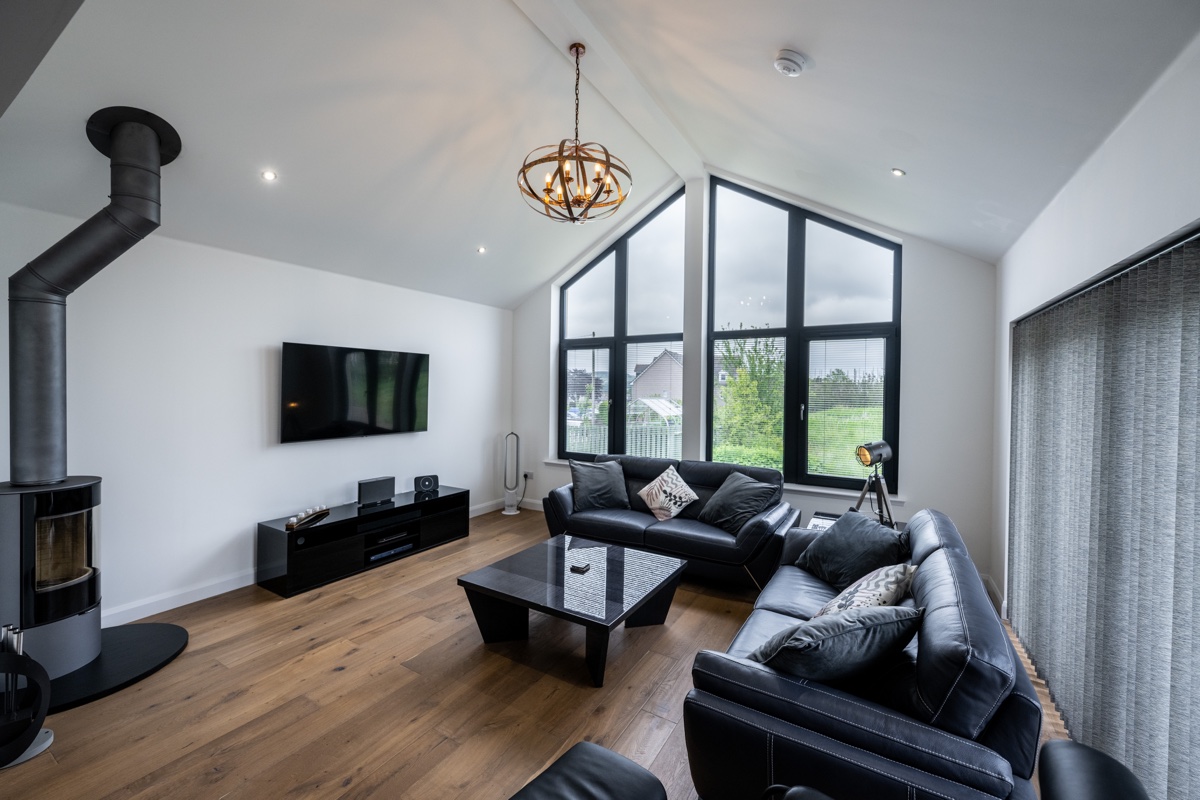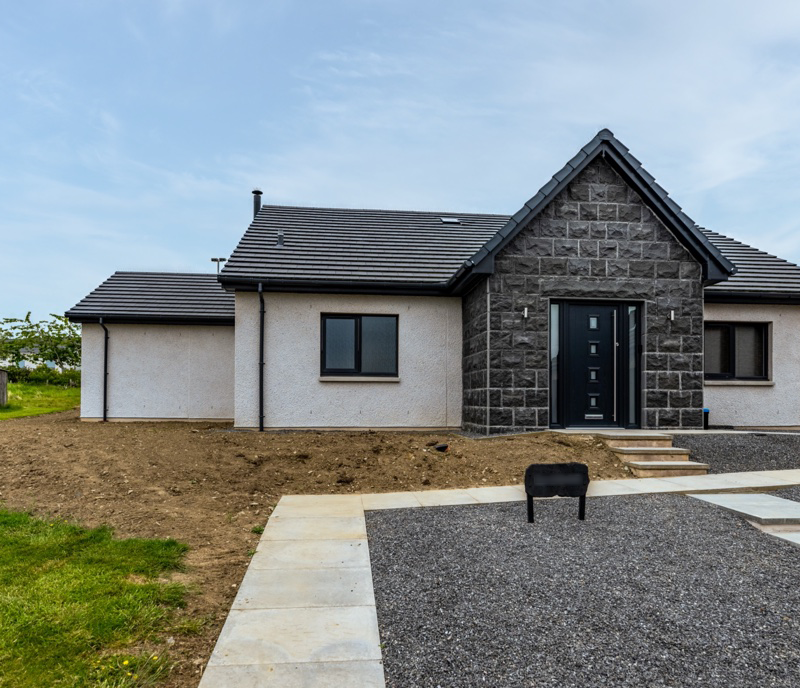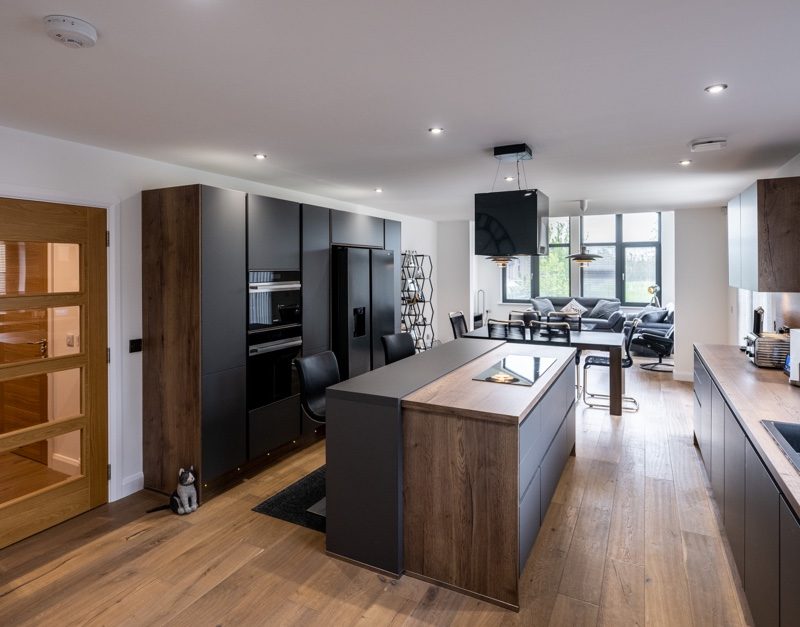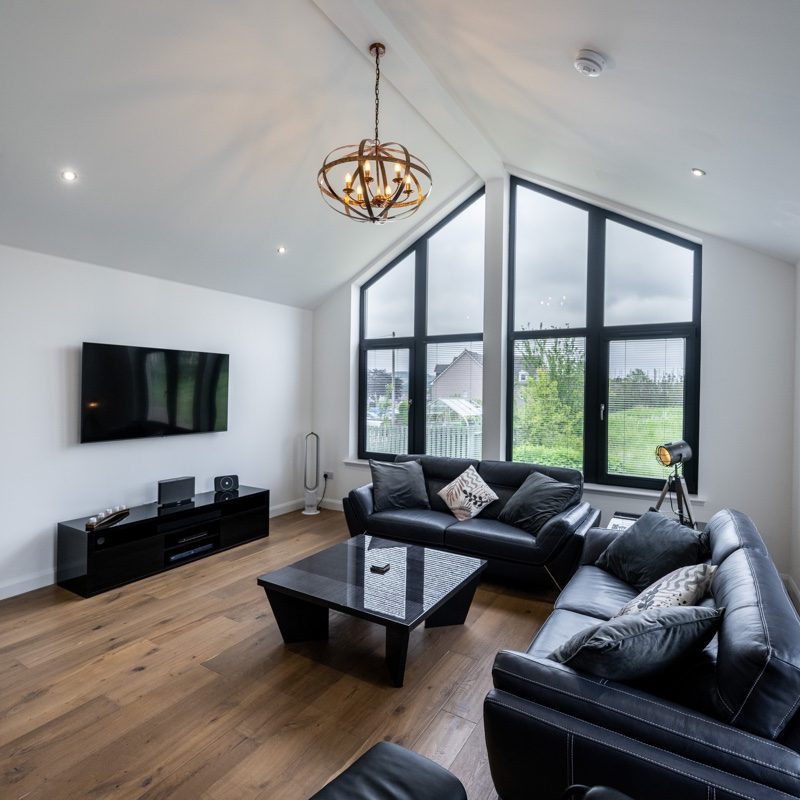
Project: Kasmir, Inverurie
Company: Scotframe
Sector: Self Build
Technology: Timber frame



Even when they moved into their bungalow – built by Gladys’ parents in Inverurie, Aberdeenshire – over a decade ago, the chance to build their own place was on her and partner Calum’s minds. In fact, one of the main reasons why they moved here, as well as the sentimental value of keeping the building within the family, was that the half-acre plot of land had potential for another home to be built on it. Although a self build was their big ambition, they did consider some other options along the way. “We had a look around some new builds in the area, but they all seemed to be very close together,” says Calum, adding: “We were used to living in a large, open plot of land.” They also nearly went down the route of selling the land to a developer, but in the end, because of the location’s convenience and potential, they finally decided that they were going to build in their own back garden.
Having never designed a house before, the Trails weren’t entirely sure what they wanted, but this meant they approached the project with an open mind. But before any of the designing started, without planning to do so, the project ended up taking a fabric first approach. As a way of enhancing their self-build knowledge, the couple attended a variety of self-building events. At one of the exhibitions in Glasgow, the couple recognised some of the representatives on a stand. The company was Scotframe, one of the largest suppliers of timber frame kits in the UK, and who happen to be based in Inverurie. “We were very impressed by the quality of the materials and build quality, and by the fact that they were a local company!” As well as discovering a kit home’s ability to achieve a high insulation rating, they say they were also “wowed” by the cross-sections they saw, which showed “how much insulation goes into the walls.” Also they were keen on how the standard kit designs could be adapted to meet their requirements. With the couple being new to the whole kit building arena, having a company with strong credentials just around the corner was hugely appealing.
The house has been rendered in light roughcast, with black tiling on the roof. The porch housing the large dark front door has been constructed from ‘black’ granite, which is grey but becomes glossy and black when it rains. The aesthetic choice of using elements of black on the exterior, including the anthracite window frames, continues inside. “Our new house is far more efficient, and that makes a difference to fuel bills and our level of comfort,” says Calum. It does include gas and electricity, but there are two solar PV and two solar thermal panels on the roof, the latter to heat the hot water.” The high levels of thermal insulation trap the heat, making it warm even in the depth of winter. Although the Trails faced some challenges on their self-build journey, they are over the moon with the final result. “We love the whole look of the house, in particular the open plan space, the amount of light that floods in.” Opting to build with a kit frame was definitely the right choice for the project, explains Calum. “The standard of the kit was exceptional, and it is exactly the house we had hoped for.” For the pair, despite Covid, it simplified the construction process and he would recommend anyone who is thinking of it as an option, to go ahead with a timber kit. With the importance of achieving a low energy home never being so important, particularly now as gas and electric prices are rising, the selection of a timber frame was definitely the “sustainable choice,” says Calum.